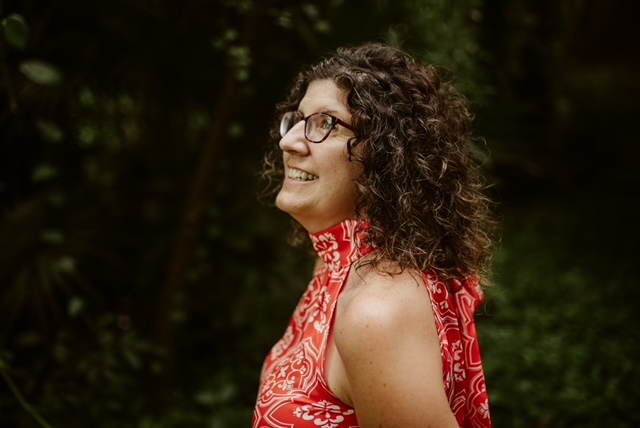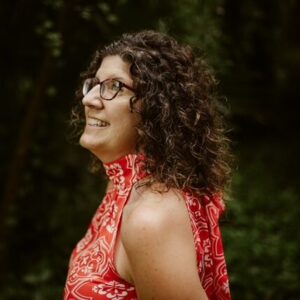
I was diagnosed with Marfan Syndrome at birth. My father had a spontaneous mutation, and he passed Marfan syndrome down to two of his four children. He will be 82 this summer, which is a long time to live with this condition.

A Mystery Diagnosis
My dad was diagnosed as a young boy in the 1940s by an eye doctor. He had trouble seeing the chalkboard in school, so his mom took him for an eye exam. The doctor looked in his eyes, saw the floating lenses and said, “I think you have Marfan syndrome,” and suggested that my grandmother take him to his primary doctor to confirm the diagnosis. There was no explanation as to what this condition was or what could be done about it. The primary doctor did confirm his diagnosis. However, the only additional information he provided was that my dad probably wouldn’t live to see his 30th birthday.
The family left both those appointments with no suggestions on treatment, no definition of what Marfan syndrome really was, no referrals to a cardiologist and no recommendations for activities to avoid to remain healthy. My dad and my grandmother both left there thinking that my dad had some crazy eye disease called Marfan syndrome and that he would die by age 30 because of it.
Navigating the Unknown
My dad continued with his life as a normal young man with no restrictions. He drove race cars, rode motorcycles, worked in construction, operated a jackhammer, and lifted heavy items. It is truly a miracle that he didn’t pass away by age 30.
Once he began having children, we were all tested at birth. My oldest brother did not have it, my next brother did have it, my next brother did not, and I did. Up until that point, my dad didn’t have any complications that he was aware of but, per the recommendation from a doctor, my parents were referred to The Marfan Foundation (known at that time as the National Marfan Foundation) where they signed up for the monthly newsletter. The only information we knew about Marfan syndrome was provided from the Foundation and that newsletter.
Loss and Learning

My dad had his first heart surgery in 1988 when he was 48. The surgery was performed by the chief of surgery. We didn’t realize what a blessing that was until years later. In 2000, my brother, who was quite active with outdoor activities, decided with his wife to go ahead and have the aorta replacement surgery. His aorta dimensions were not quite to 5 cm but it was very close, but they wanted to avoid the fear of future surgery or possible dissection to be hanging over their heads. Since my dad’s surgery went so well in 1988, my brother figured it would be a breeze in 2000 with all the medical advancements that were made.
The surgery was scheduled for April 2000, and they were very excited because they were told there was a new procedure called a valve-sparing procedure, that would eliminate the need for a mechanical valve and blood thinners. My brother and sister-in-law were very encouraged by this advancement.
Eight hours after surgery, he hemorrhaged and passed away. Obviously, this was incredibly difficult for my family, but it was especially scary for me because I knew that one day, I would need this same surgery, and I didn’t want my parents to lose another child.
Research and Hope
To start preparing for the future, I got in touch with The Marfan Foundation, and I asked for referrals of doctors that specialized in surgery for people with Marfan syndrome. That led me to the University of Michigan where I met with the head surgery at the time. I explained my situation and felt terrible interrogating the poor man, but I knew it had to be done to make my family and I confident that there wouldn’t be another tragedy. The Foundation also referred me to an email forum where I learned so much about Marfan syndrome and the issues that could arise. I had the capability of messaging other people like me and could ask any question I could think of.
I was also made aware by the surgeon at U of M, that the valve-sparing procedure was a specialty surgery and that there were only a handful of surgeons in the world that could even perform that procedure. Unfortunately, my brother’s surgeon had not been one of them.
A few years later, it was my turn for surgery. I chose the valve-sparing procedure, and the head surgeon was the man to do the job. I had my surgery on October 20, 2008, followed by two repair procedures. The valve-sparing surgery bought me 11 years without blood thinners, and I was very grateful.
A Meaningful Purpose
In addition to three heart surgeries, I have also had both the lenses in my eyes removed, and I’ve had a detached retina in each eye for a total of four eye surgeries, making it difficult for me to work, but I still wanted to remain active and give back.
A Marfan friend that I made recommended that I become a Standardized Patient at my local medical university. I ended up going to orientation at MSU Grand Rapids campus. It was perfect for me because I could work my schedule around how I was feeling. Most importantly, though, I felt like I was contributing to a good cause. If I could talk about Marfan syndrome and give these medical students a real-life face to put with the diagnosis, then they may remember Marfan’s just a little better and hopefully save lives in their careers. I have been doing this for almost 12 years now, and it is so rewarding and satisfying.
As much of a tragedy as it was for me to lose my brother, I feel he saved the lives of myself and our dad and also many future patients that may be saved due to me sharing my story with medical students. The Marfan Foundation is an amazing resource, and I consider myself very blessed to have contacted them, which, in turn, educated me so that I could aid in the care that has gotten my dad to the age of 81.
Do you need help finding a doctor or establishing a medical team? Download our institution directory, which provides a listing of Marfan syndrome and related condition clinics around the United States at Find a Doctor – Marfan Foundation.

Karen Brooks lives in Wyoming, Michigan, and will be 50 years old this September. Her hobbies include: traveling, animals, reading, learning, working, time with family, caretaking for her parent’s, and spending time outside.
